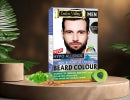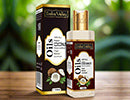In a world where health and sustainability are becoming paramount, more people are turning to natural alternatives for hair coloring. The benefits of using natural hair colors are many, including fewer chemicals, less damage to hair, and an environmentally friendly approach. Among the standout options for natural hair coloring are the Indus Valley Gel Hair Color and the traditional henna-indigo combination. Here’s a comprehensive guide on how to use these natural wonders to achieve beautiful, vibrant hair colors.
The Benefits of Using Our Natural Hair Colors
- Chemical-Free: Say goodbye to chemical damage. Our dye is free from ammonia and parabens, making it suitable for sensitive skin and environmentally friendly.
- Nourishing Formula: The blend of henna, amla, jojoba oil, sunflower oil, basil, and neem not only colours your hair but also nourishes it, preventing dryness and brittleness.
- Scalp Health: Neem and basil contribute to a healthy scalp, potentially reducing dandruff and other scalp irritations.
- Natural Luster: Enjoy a natural shine and luster, leaving your hair looking vibrant and healthy.
Indus Valley Damage Free Hair Colour
Indus Valley Gel Hair Colour stands out in the natural hair dye market with its innovative gel-based formula. This hair color uses certified organic ingredients, making it a safe choice for those looking to avoid harsh chemicals.
Key Ingredients: Aloe vera, jojoba oil, and honey ensure that the hair remains hydrated and nourished during the coloring process.
Application Process:
Prepare: Mix the gel color with the activator in a non-metallic bowl according to the package instructions.
Apply: Section your hair and apply the mixture from root to tip with a brush.
Ensure complete coverage.
Wait: Leave the dye on for 30 to 45 minutes, depending on how deep you want the shade.
Rinse: Wash your hair with a mild, sulfate-free shampoo and follow up with a moisturizing conditioner.
Henna and Indigo: The Traditional Route to Rich Colors
For centuries, henna and indigo powder have been used to create everything from rich browns to deep blacks. When used together, they offer a natural and potent alternative to conventional dyes.
Using Henna:
Prepare: Mix pure henna powder with lukewarm water to form a paste, and let it sit for a few hours to release the dye.
Apply: Apply the paste to clean, dry hair. Wrap your head in plastic wrap or a shower cap to keep the paste moist.
Develop: Leave the henna on for about 1-2 hours, depending on the desired intensity.
Rinse: Rinse out the paste with water, avoiding shampoo.
Following with Indigo:
Prepare: Shortly after rinsing out the henna, mix indigo powder with lukewarm water to make a paste.
Apply: Apply the indigo paste immediately to your hair for best results.
Set: Leave it on for 1-2 hours, depending on how dark you want your hair.
Rinse: Wash out the indigo with water only.
Tips for Success with Natural Colors
Strand Test: Always perform a strand test before applying the dyes to your entire head to predict the color outcome and test for allergic reactions.
Post-Color Care: Use color-protecting hair care products to extend the lifespan of your natural color.
Customization: Experiment with different ratios of henna and indigo to find the perfect shade for your hair.
Conclusion
Natural hair colors like Indus Valley Hair Colour and henna-indigo provide not only safer alternatives to synthetic dyes but also nurture your hair with their beneficial properties. By choosing these natural options, you contribute to healthier hair and a healthier planet, embracing beauty that’s truly sustainable.
































































